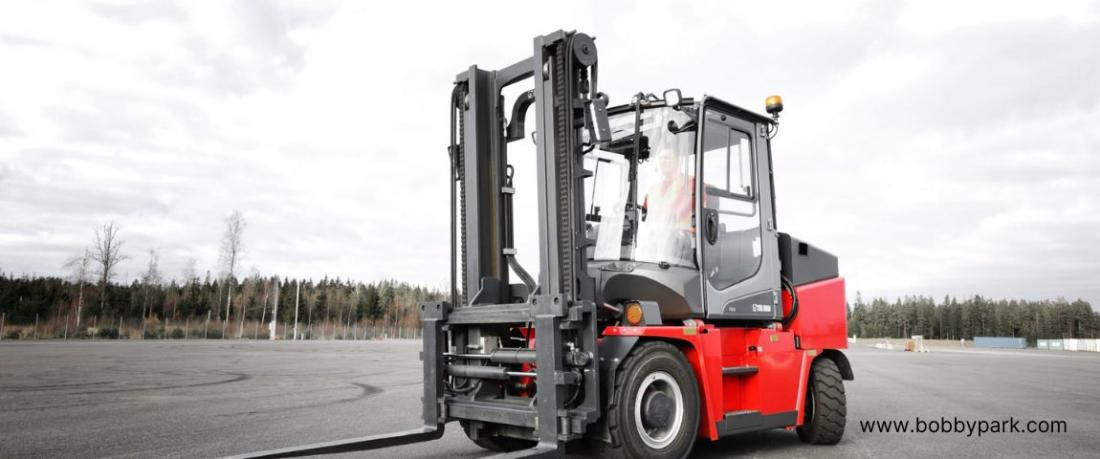HOW TO REMOVE FORKS FROM FORKLIFT? A COMPREHENSIVE GUIDE

Fork removal from a forklift may seem daunting, but it can be straightforward with the right knowledge and tools. Whether for maintenance, replacement, or other purposes, this guide from our Bobby Park Truck and Equipment experts will walk you through the steps. Let's dive in and get those forks off safely and efficiently.
What is included in the Fork Removal from the Forklift process?
If you are wondering how to remove forks from a forklift, you are in the right place. This task might seem challenging, but with the right approach, careful execution, and professional guidance, it can be done efficiently and safely. In this detailed guide, we will explain what forklift forks are, their types, the tools required for the removal, and the step-by-step process, ensuring a smooth removal. Let's get started!
Understanding Forklift Forks
Before we delve into the removal process, it's crucial to have a basic understanding of forklift forks. These are the pronged attachments at the front of a forklift that engage with pallets or other heavy loads. Forks come in various sizes and configurations to accommodate different types of loads.
Types of Forklift Forks
-
Standard Forks: These are the most common forks, suitable for a wide range of applications.
-
Telescopic Forks: Adjustable in length, these forks are versatile for handling loads of different sizes.
-
Folding Forks: These can be folded back, offering flexibility in tight spaces.
-
Bale Forks: Specifically designed for handling bales of hay or straw.
-
Rotating Forks: These forks can rotate, allowing for precise positioning of loads.
Tools Required for Fork Removal
Gathering the right tools is essential for a smooth removal process. The technicians at our used forklifts and truck dealers will guide you about the tools required for removal. Here's what you'll need:
-
Wrench set
-
Safety gloves and goggles
-
Hydraulic jack
-
Blocks or stands for support
-
Locking pliers
Step-by-Step Guide by Used Trucks and Forklift Dealers
Used commercial truck and forklift dealers offer a step-by-step guide for customers looking to purchase reliable equipment. With their expertise, they assist buyers in selecting the right truck or forklift, arranging financing, inspecting the vehicle, and completing the necessary paperwork, ensuring a smooth and hassle-free buying process.
Step 1: Ensure Safety Precautions
Before you begin, it is crucial to prioritize forklift safety measures. Our Bobby Park Truck and Equipment technicians will suggest putting on your safety gloves and goggles and ensuring the forklift is on a level surface. Engage the parking brake and turn off the engine.
Step 2: Elevate the Forks
Carefully elevate the forks a few inches off the ground using a hydraulic jack. This will relieve pressure on the retaining pins and make removal easier.
Step 3: Locate Retaining Pins
Look for the retaining pins that secure the forks in place. These are typically found near the base of the fork where it connects to the carriage.
Step 4: Remove Retaining Pins
Using the appropriate wrench, carefully remove the retaining pins. Keep them safe, as they'll be needed when reattaching the forks.
Step 5: Lower the Forks
Gently lower the forks back to the ground using the hydraulic jack. Make sure to do this slowly and steadily to avoid any sudden movements.
Step 6: Slide Out the Forks
With the retaining pins removed, you should now be able to slide the forks from their position on the carriage.
Fork removal from a forklift is a task that can be accomplished with the right tools, knowledge, and safety precautions. By following this step-by-step guide, you can ensure a smooth and efficient removal process. Always prioritize safety and take your time to complete each step accurately. For further details, contact our esteemed truck dealership team on our website.
Here are a few questions further explaining the safe removal of forklift forks.
Frequently Asked Questions
Q1: Can I remove the forks without using a hydraulic jack?
While fork removal from a forklift might be possible, using a hydraulic jack provides additional safety and makes the process much easier.
Q2: Are there different sizes of retaining pins?
Retaining pins come in various sizes to fit different forklift models. Ensure you have the correct size for your forklift.
Q3: Do I need any special training to remove forklift forks?
Before attempting this task, it is recommended to have basic knowledge of forklift operations and safety procedures.
Q4: Can I use a regular wrench, or do I need a specific forklift wrench?
A standard wrench of the appropriate size should work, but a forklift wrench is designed for this task and may provide a better grip.
Q5: What if the forks are stuck?
If the forks are difficult to remove, double-check that all retaining pins are completely removed, and try gently tapping them with a mallet. Also, hire a professional team to remove any accessories.
WHY CHOOSE US?
- Full Parts and Service Shop
- State of the Art Paint Shop
- Body Work
- Van bodies, reefer bodies, Flatbed bodies and Storage Containers available
- Tuscaloosa and Jackson Locations
- Ships anywhere in the United States

